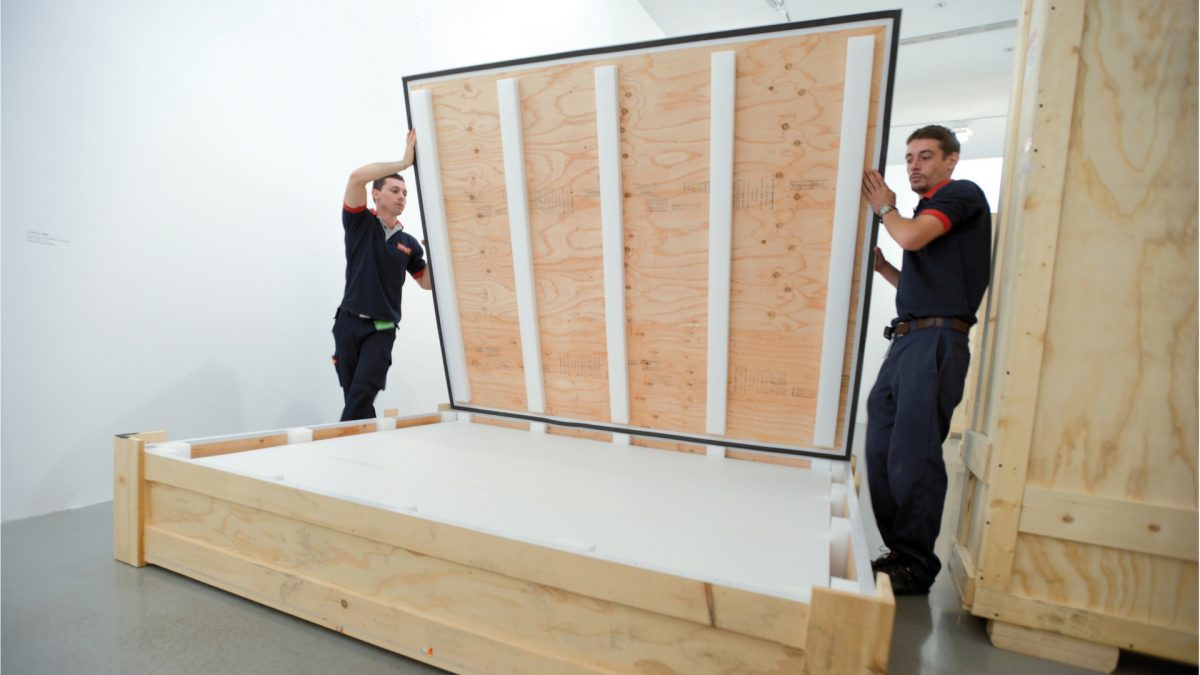
Here’s How You Can Ship And Handle Fine Art
What could go wrong when art is in transit? Plenty. We speak to the regional frontman Gus VanGeijtenbeek at global art logistics service Crown Fine Art about challenges and the best ways of handling and transporting art
For anyone with reverence for fine art, there is nothing more terrifying than a damaged piece of work. And it is during packaging and transit that an artwork is most susceptible. With global art trade more robust than ever and a growing number of art fairs and both one-off and travelling exhibitions, a carefully considered art shipping routine is the need of the hour. Especially here in the Middle East, increasingly international art shows and cross-cultural exchanges with resulting outposts such as Louvre Abu Dhabi mean it is essential to have a well-rounded approach to handling and delivering art with care.
It is here that art logistics services such as Crown Fine Art come into play. “Caring for, transporting and handling fine art can be challenging,” says Gus VanGeijtenbeek, Regional General Manager, Middle East at Crown Fine Art. “It is a relatively young industry and the risks are not widely known or appreciated, but I am working hard to change this,” he adds.

Gus VanGeijtenbeek and Crown Fine Art team assess an artwork
Heat, humidity, size, weight and material, among other factors, affect how artwork is handled and shipped. Then, art shipments are also subject to custom regulations that differ from region to region. “When organising an exhibition, you need to consider routing and timelines to avoid unnecessary financial implications on duty payments. We undertake consultancy in this area to help clients avoid cancelled exhibitions.”
VanGeijtenbeek emphasises the need for collectors and dealers to work with expert personnel when moving art to and from the Middle East, particularly since the region has many considerations and often requires technical construction to meet transportation criteria. “I always tell clients that planning is 90 per cent of what we do – it really is that important, especially when it comes to unpacking and installing the art. We need to understand the journey that the art will take and consider every last detail, so our art handlers can prepare for every eventuality.”

The Crown Fine Art Team in the process of loading a shipment
The process begins with the clients who put forth their needs, based on which Crown Fine Art develops a personalised plan addressing questions such as what materials and vehicle are required and which team members are best suited to the job. The company offers a host of services that include managing exhibition logistics and artwork installation, customised crating and consultancy in addition to handling and offering specialised transportation for fine art.
They also provide climate-controlled storage for artworks, especially since wood- and plastic-based packing materials are not conducive to all temperatures. “Temperature control is always vital, particularly given the climate here in the Middle East,” explains VanGeijtenbeek. “We use specialist material such as acid-free tissue and polyurethane foam for shock absorption to help protect the art and often create custom packaging solutions in line with the art itself, the client’s needs and budget.”
It is then at the core of the process of shipping art that the specialists involved are familiarised with the artwork to ensure it is in line with requirements specified by the carrier and customs and is protected against potential damage in transit. “We also select the best mode of transport for each item, whether it be courier, airfreight or sea. There can also be a specific documentation required for customs clearance, such as CITEs license for materials such as ivory.”

A member of the team carefully handling an artwork in order to package it
It is, of course, no easy feat to preserve and deliver artworks in their original state and VanGeijtenbeek has experienced his share of challenging deliveries. “One of the most challenging artworks I shipped was a 5-tonne steel Koons (Jeff) sculpture. The artwork was transported under continuous police surveillance and unexpected maintenance on a rail bridge meant a lower height clearance and a subsequent detour, which almost resulted in us missing the event,” he shares. “However, within two hours of the event starting, our team had finished the installation of the sculpture, and the guests admiring the piece of were unaware of the effort it took to get it there.”
At present, Crown Fine Art is actively involved with art foundations, auction houses and private clients in the Middle East. “The Middle East is a really buoyant market for fine arts and we are fortunate to work with many interesting clients such as Abu Dhabi Music and Arts Foundation (ADMAF),” says VanGeijtenbeek. “Due to our respect for and confidentiality of our clients, we cannot always disclose our projects, but we are increasingly working on a global basis, bring unique and interesting pieces into the region from around the world, including another new exciting project with ADMAF, which will be taking place in Abu Dhabi in January.”
For more information, visit Crownfineart.com.
